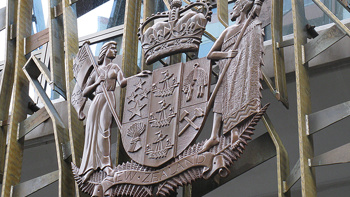Work was under way to get the New Lynn mall attacker into the High Court "so that he could be held to account for failing to engage" with an order for psychiatric assessment and treatment, the Department of Corrections has said.
Corrections has also said it was planning to ask the High Court to strengthen the conditions on which he was released from prison "due to concerns about his escalating risk".
Those plans had yet to come to fruition when, seven weeks after his release, Ahamed Aathill Mohamed Samsudeen, 32, travelled from the Glen Eden mosque where he was living to New Lynn where he injured seven people during a rampage that ended when police shot him dead.
A detailed account of Samsudeen's management in prison between May 2017 and his release on July 13 2021 has emerged from Corrections National Commissioner Rachel Leota. It is the latest such account and follows Immigration NZ detailing its interaction with Samsudeen.
The Corrections' account revealed Samsudeen spent a year in the maximum security unit at Auckland Prison built to imprison the Christchurch mosque attacker.
Leota described Samsudeen as "a very, very difficult person to manage, and was increasingly openly hostile and abusive toward probation staff".
She had a message for victims of Samsudeen's attack: "I can only imagine their horror and pain, and the enduring trauma that they will face. Our thoughts are with them."
The detailed account of Samsudeen's time in custody showed he was first taken into Corrections' custody in May 2017, released on bail in June 2018, then imprisoned again in August 2018 after new charges were laid.
At that point, he had been sentenced on fraud charges and sharing restricted material - the ISIS-inspired online terror content - and was facing new charges relating to possession of objectionable content and possession of a hunting knife in a public place.
Between May 2017 and July 2020, Samsudeen was a remand prisoner at Mt Eden prison, then shifted to the Auckland Prison unit run by the Persons of Extreme Risk Directorate "for increased oversight".
The unit was set up to manage the Christchurch attacker who murdered 51 people at two mosques on March 15, 2019.
/cloudfront-ap-southeast-2.images.arcpublishing.com/nzme/CY7CNSVA7AMXQ35DMT7FQSI5IA.jpg)
Ahamed Aathill Mohamed Samsudeen in the High Court after being found in possession of images showing extreme violence, cruelty and death. Photo / File
Leota said Samsudeen's behaviour in prison involved "multiple incidents of threats and abuse toward staff, including numerous incidents of throwing urine and faeces at staff, threatening the use of violence, and assaulting staff".
That included an incident in June 2020 during which he assaulted two Corrections officers after an argument over the exercise yard to which he was being taken. The assault escalated with further attacks on and threats towards Corrections officers, and led to new charges being laid.
Leota said Corrections used its plan for those holding "potentially violent extremist views", bringing in staff with a range of expertise including psychologists. It also brought in the Countering Violent Extremism community engagement forum, which provided advice with "an offender's rehabilitation and reintegration".
"Attempts were made to provide him with mental health support while he was in prison, however he refused to engage. He also refused to meet with a Corrections psychologist while in prison."
Through the Counter Violent Extremism forum, Samsudeen met with an Imam from the local Muslim community. Samsudeen "didn't engage in a meaningful way", she said, and Corrections was unable to compel someone to engage with rehabilitation efforts.
/cloudfront-ap-southeast-2.images.arcpublishing.com/nzme/7ZOPLJZTDOLBZWBVGYMEYCKATA.jpg)
Ahamed Aathill Mohamed Samsudeen in an image posted to his social media account. Photo / Supplied
When Samsudeen was released from prison on July 13 2021, he was constrained through a sentence of 12 months supervision which included conditions imposed under the law and specific conditions targeted at him. He was also facing charges for the assault on Corrections officers.
Leota said before Samsudeen's release, police and other agencies had planned extensively "to keep the community, and our staff, safe from the extreme risk that his violent extremist ideology presented".
That included authorities finding a suitable place for him to live - he had no friends, family or other contacts who could provide accommodation and "public housing was not available due to demand".
The manager at the Glen Eden mosque agreed to take Samsudeen in on a short-term basis after authorities arranged for the pair to meet in prison. Samsudeen, who had initially rejected living at a mosque, agreed.
Samsudeen's seven weeks in the community saw "extensive and ongoing thorough multi-disciplinary and multi-agency involvement in his monitoring and oversight", said Leota.
Leota said Samsudeen had not been charged with breaching his release conditions "because he had not failed to comply with any of them". She said Corrections believed he would approach people he had been banned from contacting and "was preparing in advance to charge him for this".
It also wanted a High Court ruling over Samsudeen's release condition he undergo psychological assessment and treatment. She said Corrections "were in the process of applying to the Court to strengthen this special condition, so that he could be held to account for failing to engage".
/cloudfront-ap-southeast-2.images.arcpublishing.com/nzme/GLFFUSFGE7XBNB2HOSLV4V633A.jpg)
Ahamed Aathill Mohamed Samsudeen. Photo / Supplied
"Legal advice indicated that this was not sufficient to charge him with breaching the related condition of his sentence.
"While there had only been a short period of time between his release from prison, every effort was under way to have him engage with psychological assessment and treatment, including from a private psychologist."
Leota said Corrections staff with responsibility for those in the community were "using every lawful avenue available to monitor, assess, mitigate, and manage his risk". She said risk assessments were done more often than usual, and risks were discussed with other agencies when they arose.
"Many of our staff worked exceptionally hard to prevent the potential for serious harm to be caused by this person. They, and all of us, will always ask what more could have been done to prevent the horrific offending that occurred on Friday."
Take your Radio, Podcasts and Music with you









